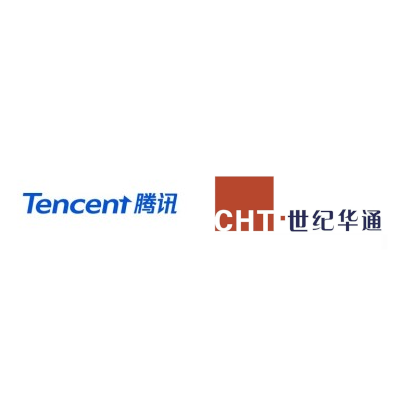The Evaluation of Self-Service Mobile DSPs
by Mathew Broughton on 25th May 2020 in News

In this exclusive article for TheGamingEconomy, Mathias Würdemann (pictured below), Senior Online Marketing Manager at InnoGames, details the criteria and selection process the studio uses when selecting a self-service demand-side platform (DSP) to run its mobile campaigns.
Programmatic advertising has been on everyone’s lips in the online marketing industry for a couple of years. Many mobile app companies understand that programmatic should be a part of the marketing mix if they are looking to scale beyond Facebook and Google. But for many advertisers it is still challenging to run successful campaigns with a mobile DSP.
We at InnoGames, one of Germany’s leading developers and publishers of online and mobile games, were also facing some challenges while trying to ramp up our programmatic activities for our mobile games. One very important variable for being successful is finding the right tool. In this article I want to share InnoGames’ evaluation process to identify the most promising self-service mobile DSP for performance-driven user acquisition campaigns.
Self-service vs. managed DSP

Mathias Wuerdemann, Senior Online Marketing Manager, InnoGames
Before you start thinking about running campaigns with a self-service DSP, you should review if this is the right type of DSP for your goals. In general, there are three different types of DSPs out there. You can select from a managed DSP, a self-service DSP, or a hybrid of both. All of them have their respective advantages and disadvantages, however in this article I will focus on self-service DSPs.
If you decide to go for a self-service DSP, you have to create, manage, and monitor campaigns by yourself. You are the one in charge of targeting, bidding, and optimisation. If you are already an experienced marketing manager, this could be an advantage. The most significant downsides are a high workload and a high level of responsibility on your shoulders. The most significant upsides are reduced costs for maintenance, the ability to create and optimise campaigns on your own and, of course, more flexibility. Are you ready for the challenge?
Finding potential candidates
Before you start setting up a screening process, you must become aware of what you want to achieve. There is a DSP for almost every need available. Knowing what you want helps already to reduce the number of potential candidates.
Our goal is to drive traffic to our mobile games, while meeting return on ad spend (ROAS) targets. Therefore, we were looking for a performance-driven mobile-first DSP. Furthermore, we decided to focus on acquiring new users and therefore, to filter out branding- and retargeting-focused DSPs. Another important criterion was the industry reputation. It helps a lot to ask other advertisers from the same or at least similar industries to share their experiences.
This first step already helped to decrease the amount of available service providers. But we still ended up with lots of potential partners.
Developing selection criteria
In the second step, we tried to find a way to evaluate the quality of the DSPs. For this purpose, we compiled a “catalogue” of criteria reflecting different subjects, such as targeting options, inventory integrations, service, and support. In the following, I will share some of our criteria.
Inventory
Even if it seems like all DSPs have access to the same inventory, in reality there are a lot of differences. DSPs have to pay to listen to impressions and that’s why they focus on different channels. Some DSPs might for example focus on native supply, others focus on video, and so on.
One of our questions was, which supply sources the DSP is integrated with and how many of those integrations are direct, added intermediaries might increase costs.
Another important criterion to consider is the inventory available in different countries. That’s why we asked the potential candidates for the top countries based on reach. We also wanted to know, if the DSP offers exclusive inventory sources and if there are any relevant inventory sources for gaming available.
Transparency
Transparency is crucial, especially if you’re looking for a self-service DSP, as this will help you a lot when optimising your campaigns. Therefore, the minimum requirement for us was that the DSPs offer transparency on the ad exchange-, publisher- and placement-level.
Lookalike Audiences (LALs)
LALs enable advertisers to reach an audience that is similar to their current customers. It is not only important that the feature is offered, but also how the algorithm is creating those lookalikes and what the expected accuracy is. Some DSPs are only able to create LALs based on email addresses from a certain county, others may offer to create the audience based on global mobile identifiers.
Pricing
Fee structure, minimum spend levels, delivery fees, and ad serving costs, should all be considered in the evaluation process. Also, be aware that there might be ad spend commitments, for instance some DSPs might offer you flat fees, whereas others want to commit on flexible fees based on ad spend. It can also pay off to ask the service provider to spread the financial risk in the testing phase.
Creative
For us, it was important to know the types of creative formats supported by the DSP and if we would be able to host the creatives directly in the tool, or if we need to use an additional ad server. For instance, video ads usually drive higher engagement. If you’re planning to run a lot of video campaigns, it’s worth asking if the DSP is connected to exchanges that support video advertising. If you’ve seen success with playables on other marketing channels, you should check if the DSP is connected to the right exchanges.
Another question should be about the creative pricing: Does the DSP offer cost per mille (CPM), cost per view (CPV), or cost per completed view (CPCV) trading?
The evaluation process
Based on our “catalogue” of criteria, we developed a questionnaire with 30 questions, which we sent out to potential partners. This questionnaire contained items like:
- “Which exclusive inventory sources do you offer?”
- “Is it possible to target specific apps and categories?”
- “Do you offer gaming-specific targeting options?”
- “Is the algorithm optimising in an advertiser silo or also taking other advertiser traffic and performance data into account?”
The questionnaire was a good second step in the evaluation process, but you cannot make a good decision only based on hard facts. In order to be able to evaluate the companies, we decided to do video interviews and evaluate the companies based on different soft facts in a next step.
We felt it was important to get an impression of the technical competence, the service level and the transparency of the people working for a given DSP. With this soft-skill evaluation, we were able to reject DSPs which made a very unprofessional first impression (not motivated, too late, etc.), and we identified some DSP representatives who were not able to explain the technology they are using. A good starting point is to ask for an explanation of how the algorithm is working and what it needs to exploit its full potential.
Our learnings
Know what you want
There is a huge range of DSPs out there. To be able to narrow down your choices, you should know what you are looking for. Do you have the capacities and knowledge in your company to run self-service campaigns, or does it make more sense to start with a managed DSP? Are you looking for a mobile-only DSP, or are you going to run campaigns on desktop as well?
Be prepared
Especially in the very complex world of DSPs, it is important to know what you are talking about. Before starting a screening process, you should understand the technology behind DSPs and know the most important quality criteria.
Do you know how a DSP works? Do you understand the technical terms (QPS, SSP, etc.), or can a salesperson misguide you?
To prepare yourself, it might help to talk to people from other companies, connect with representatives from ad exchanges and publishers.
Challenge the DSPs!
To evaluate the quality of a DSP you have to dig deep. Ask lots of questions and try to understand the technology behind the DSP. Ask how the algorithm is working and how the machine learning is working. Try to understand what makes the company unique and what are the strengths and weaknesses. By doing this you will be able to evaluate the technical competence of the people you are going to work with. And you are going to learn a lot.







Follow TheGamingEconomy